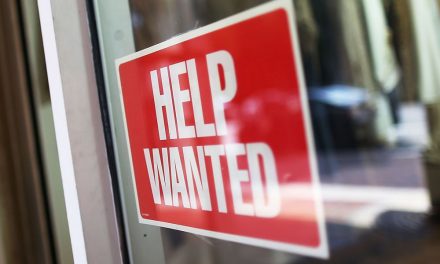December was a good month for American workers. According to a Labor Department report, U.S. companies have hired more workers and increased wages in that month alone. This indicates continued strength in the country’s economy and would hopefully ease concerns about any growth slowdown.
The glowing report was in direct contrast to other stories that revealed a downturn in activity in Chinese factories in December. That was the first time it happened in 10 months. Manufacturing across most of Europe also appeared to have slowed down.
Financial markets have been wary about America’s economy after surveys revealed a massive drop in manufacturing ventures and consumer confidence last month. The two were seen as signs that the American economic growth, which is the second longest at nine years, is starting to lose its momentum.
Employment Report Paints a Pretty Picture
The payroll increases in December appears to belie any claims of an economic downturn. At least that’s what it seems to Paul Ashworth, Toronto’s lead economist at Capital Economics. According to Ashworth, the employment report even shows that America’s economy is still on a roll.
The construction, hospitality, and leisure sector showed the highest gains since February. These sectors surged forward after they were held back by November’s unbearably low temperatures. Meanwhile, most industries also showed significant job increases. The only exception was the information sector which showed an employment drop for two months straight.
Data showed that 2.6 million jobs were created in 2018, a big boost from the 2.2 million developed in 2017. Hourly wages also increased by 11 cents in December while employers increased the work week by 34.5 hours.
However, unemployment rates also went up to 3.9 percent from the previous low 3.7 percent. A strong labor market in November saw around 419,000 jobless citizens landing jobs. Meanwhile, fewer people did part-time jobs last month. The number of working-age US citizens who are either looking for jobs or who have one went up to 63.1 percent. This is the highest level it has been since September 2017.
This positive employment report will probably justify the Federal Reserve’s plan to raise interest rates this year, a move that will push tensions between President Donald Trump and Wall Street higher. The White House has repeatedly criticized the Fed and its head, Jerome Powell, for the rate hikes.
Powell had tried to calm down a worried Wall Street last week during an event hosted by the American Economic Association. The Chief of America’s Federal Reserve explained that they were “always prepared to shift the stance of policy and to shift it significantly” if needed. He also stated that he would not be resigning even if called on to do so by Trump.
The Fed has raised interest rates four times in 2018, with the central bank projecting two more hikes in 2019. It also signified that its tightening plans were almost at an end as the global markets slow down. In contrast, the US financial markets are forecasting no rate increases this year. In what is perceived as a sign that investors believe the central bank can’t lift rates anymore, yields on two-year Treasury notes went down past the Fed’s policy rate. It’s the first time this has happened in more than ten years.
Far-Reaching Impact on Employment
The boost in December’s employment saw the country’s total job numbers hitting more than 150 million jobs. The partial government shutdown hasn’t affected the Bureau of Labor Statistics and the Labor Department so far, and the two agencies will continue to compile and publish the relevant economic data.
However, data from the Bureau of Economic Analysis and the Census Bureau have been in limbo since the shutdown began on Dec. 22.
The strong labor market, particularly the robust wage increases, implies that the US economy will continue to gain ground in 2019, even in the face of lowered consumer confidence, problems in the housing sector, and the ongoing manufacturing downturn.
The construction sector saw an increase of workers in December, with firms employing 38,000 workers. Manufacturing companies also saw their payrolls swell with 32,000 jobs last month while retailers accepted an additional 23,800 employees.
Business and professional services employment also saw a boost of 43,000 jobs during the last month of 2018 while government institutions saw 11,000 members added to their payrolls. The hospitality and leisure niche also saw their staff numbers rise, thanks to the 55,000 jobs added. Meanwhile, the education and health sectors opened up 82,000 positions.
Economic forecasts for the last quarter are pegged at 2.6 percent yearly rate, with the risks leaning towards a downside as the stimulus from Trump’s $1.5 trillion tax cut deal begins to fade. The ongoing trade war with powerhouse China and the lingering uncertainty over Washington policies are also expected to have an impact.
However, anecdotal evidence has also shown that a growing number of businesses are now having problems securing workers and increases wages to attract and retain employees. The government shutdown, which is expected to continue for a few more weeks, will also weigh heavily on this month’s payrolls.














